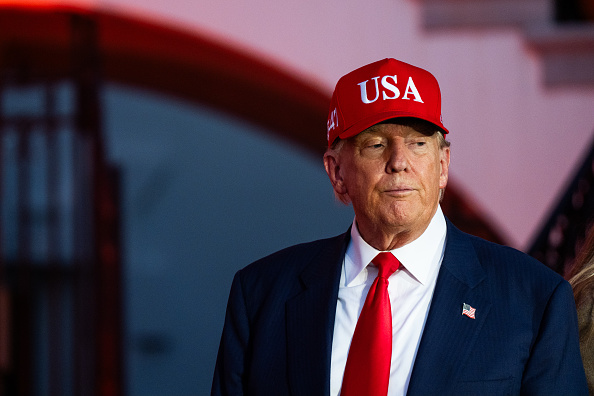EU’s Critical Raw Materials Act will need better financial support, say industry experts
Financial institutions must be made aware of the investment potential in Europe’s Critical Raw Materials sector if the EU is to succeed in meeting its own goals under recently approved legislation.

Financial institutions must be made aware of the investment potential in Europe’s Critical Raw Materials sector if the EU is to succeed in meeting its own goals under recently approved legislation.
That was the message from one senior banking executive speaking at Euractiv’s roundtable on the future of the European raw materials industry.
“There are very few people in financial institutions that deal with this sector,” warned Nicoletta Zappatini, Managing Director, Olea Capital. “Even if the money is abundant, when you go to speak to your banker or portfolio manager, they may have a limited knowledge of what’s going on here.”
The EU’s Critical Raw Materials Act (CRMA) entered into force on 23 May 2024, following its adoption by the Council of the EU and the European Parliament.
It specifies a list of 34 materials deemed to be critical, of which 17 are strategic, like copper, aluminium and natural graphite.
The list includes materials used to create solar panels, electric vehicles and other products deemed critical for the EU’s green transition plans.
CRMA key targets
The key targets that the CRMA sets out are that by 2030, at least 10% of the bloc’s annual consumption of the listed material must come from local extraction, 40% of the raw materials processed within the EU, even if purchased from outside, and at least 25% will come recycling materials.
The European Commission says it understands the geological constraints Europe faces with a lack of access to natural resources on the ground but that it wants to make sure the EU places itself strategically.
“We’ll never be self-sufficient, but since we’re going to be relying on imports, we need to partner, and we need to diversify our supplies,” said Léon Delvaux, Acting Director of DG Trade of the European Commission.
Interconnecting legislation
The EU Commission knows that the interconnecting legislations for the green and digital transition targets of the EU means that there it has purchasing power.
“We have a 51% share of trade to GDP in the European Union, which is the highest basically of any entities in the world,” said Léon Delvaux. “Trade with, investment in, and more broadly partnering with third countries will therefore be key.”
In an attempt to decrease the EU’s dependence on individual sources of critical materials from outside of the bloc, the CRMA stipulated that no more than 65% of the EU’s annual consumption of a single material can come from one single third country.
That is a major concern for industry players in the sector, especially in relation to China, and was highlighted during the Euractiv discussion.
“Six years ago, for environmental reasons, they [China] stopped the production of some new facilities for green electrodes. So our customers here in Europe were running out of electrodes and were coming to us with, ‘put the money for the price of the electrodes to whatever you want’, because Chinese or otherwise, they will lose full production,” said Juan Antonio Aranzabal, General Manager, Graftech Iberica, which is working on the production of green graphite electrodes.
“Suddenly, China came back to production, and they forgot the whole thing, and they’re buying from the cheapest supplier as usual,” said Mr Aranzabal. “They’re [China] not subsidising just the final product but the whole critical chain,”
Mining output targets
One of the big questions for Europe in the CRMA is how to hit the magic number of 10% for the EU’s own mining output, which currently supplies 3% of consumption.
France, Italy and Germany announced earlier this year that they are planning to raise €2.5 billion in initial funding to support private resource projects, but financiers say there also needs to be a fundamental shift in thinking.
An EU board has been set up to oversee the implementation of the Critical Raw Materials Act, and it is starting to consider projects for funding, including for new mining in Europe.
“We had the first wave of applications coming in. We are now selecting the projects,” says Hildegard Bentele, German MEP and Member ITRE Committee of the European Parliament, who was instrumental in negotiating the CRMA and now sits on the CRMA Board. “We did the paperwork, we set the framework, we did the legislation, and now it’s about implementation.”
The Board is working on the shortening of permit procedures for new mining projects, coordination across the EU to share know-how and resources, and ways to create better access to finance.
The initial expectation was that there would have been 40-50 applications for project funding, but according to MEP Hildegard Benetele, there were 170.
“The application phase was fast, and it was just prolonged by about a month because of the huge amount of applications,” she said in Brussels. “Economy is about psychology, and we have to now be more assertive and more optimistic that we can do it.”
Reducing bureaucracy
Reducing the bureaucratic burden has remained the key demand from the industry as the implementation of the CRMA kicks in.
“We are overwhelmed with all these things that we have to do in a very short time,” warned Juan Antonio Aranzabal, speaking as the President of the European Carbon and Graphite Association (ECGA). “This is increasing, so there’s no fair competition now between the European industry and the rest of the world.”
The challenge for Europe is to support and build the industry in the face of major global competition.
This article follows the policy debate “The future of the European raw materials industry – How can Europe remain competitive on the global stage?“ supported by ECGA.
[Edited By Brian Maguire | Euractiv’s Advocacy Lab ]






